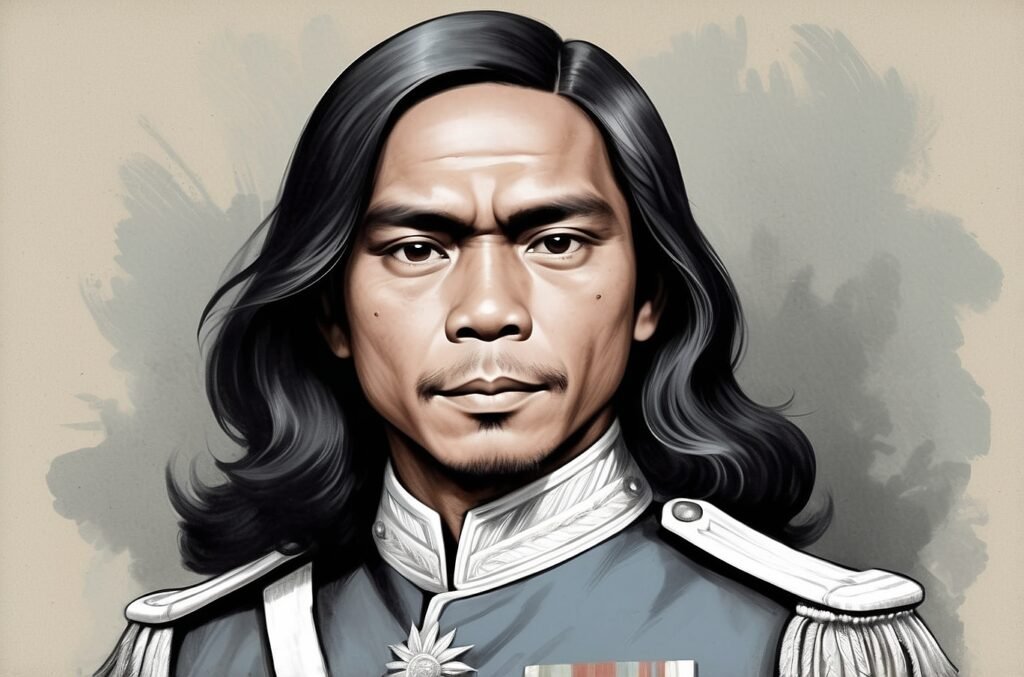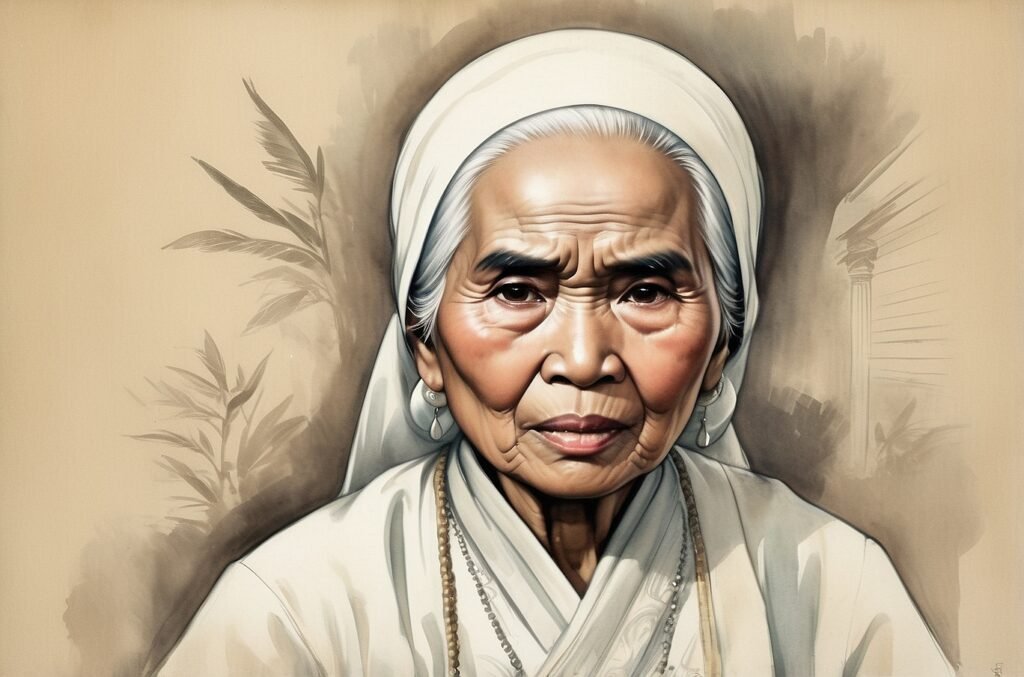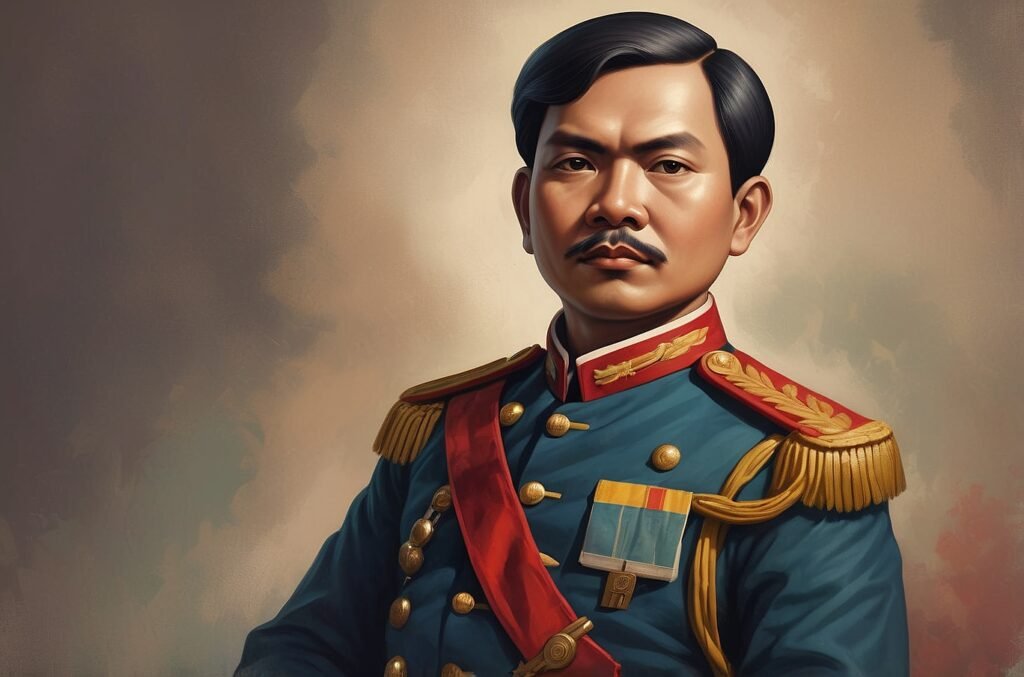Macario Sakay y de León, a name often overlooked in Philippine history books, stands as a testament to the enduring spirit of Filipino independence. Born in 1870 in Tondo, Manila, Sakay rose from humble beginnings to become a key figure in the Philippine Revolution against Spanish colonial rule and later, the Philippine-American War. His life and legacy, particularly his role as the President of the Tagalog Republic, offer a compelling narrative of resistance, leadership, and the complexities of nation-building in the face of colonial oppression. This blog post delves into the life of Macario Sakay, exploring his contributions to Philippine independence and examining why his story remains relevant in contemporary discussions of Philippine history and national identity.
Early Life and Revolutionary Beginnings
Childhood and Education
Macario Sakay was born on March 1, 1870, in Tondo, Manila, during a time when the Philippines was under Spanish colonial rule. Growing up in a working-class family, Sakay experienced firsthand the disparities and injustices of the colonial system. His early education, though limited by the standards of the time, instilled in him a sense of curiosity and a desire for knowledge that would serve him well in his later years. As a young man, Sakay worked as a kalesa (horse-drawn carriage) driver and later as a tailor, occupations that brought him into close contact with people from various walks of life and exposed him to the diverse perspectives and grievances of his fellow Filipinos.
Joining the Katipunan
In the 1890s, as discontent with Spanish rule reached a boiling point, Sakay became involved with the Katipunan, a revolutionary society founded by Andrés Bonifacio. The Katipunan’s goals of independence from Spain and the establishment of a sovereign Philippine nation resonated deeply with Sakay. He quickly rose through the ranks of the organization, impressing his fellow revolutionaries with his dedication, charisma, and strategic thinking. Sakay’s involvement in the Katipunan marked the beginning of his journey as a revolutionary leader, setting the stage for his future role in the struggle for Philippine independence.
The Philippine Revolution and American Occupation
Role in the Revolution Against Spain
When the Philippine Revolution against Spain erupted in 1896, Macario Sakay was at the forefront of the struggle. He participated in numerous battles and campaigns, demonstrating both courage and tactical acumen. Sakay’s leadership skills came to the fore during this period, as he commanded various units of the revolutionary army. His experiences during the revolution against Spain further solidified his commitment to the cause of Philippine independence and honed his abilities as a military strategist and leader.
Transition to American Rule
The conclusion of the Spanish-American War in 1898 brought significant changes to the Philippines. With the signing of the Treaty of Paris, Spain ceded the Philippines to the United States, effectively transferring colonial control from one power to another. This turn of events was met with disillusionment and resistance by many Filipino revolutionaries, including Sakay, who had fought for complete independence rather than a change in colonial masters. The ensuing Philippine-American War, which began in 1899, saw Sakay and other revolutionary leaders continuing their struggle, now against American forces.
The Tagalog Republic: Sakay’s Vision of an Independent Philippines
Formation and Structure
In 1902, as the Philippine-American War officially ended and many revolutionary leaders either surrendered or were captured, Macario Sakay took a bold step. He established the Tagalog Republic, also known as the Republic of Katagalugan, as a continuation of the Philippine Republic proclaimed by Emilio Aguinaldo in 1899. The Tagalog Republic, despite its name, was envisioned as a government for all Filipinos, not just the Tagalog-speaking regions. Sakay structured his government with himself as President, drawing on both traditional Filipino leadership models and modern concepts of governance.
Key Positions in the Tagalog Republic:
| Position | Name |
|---|---|
| President | Macario Sakay |
| Vice President | Julian Montalan |
| Secretary of War | Lucio de Vega |
| Secretary of Interior | Leon Villafuerte |
| Secretary of State | Alejandro Santiago |
Governance and Policies
Under Sakay’s leadership, the Tagalog Republic implemented a range of policies aimed at establishing a functioning government and continuing the resistance against American rule. These included:
- Establishing local governance structures
- Implementing a system of taxation to fund government operations
- Organizing military units for defense and resistance
- Promoting education and cultural preservation
- Maintaining diplomatic efforts to gain international recognition
Sakay’s government faced significant challenges, operating in a guerrilla-like fashion in the mountains of Southern Luzon. Despite these difficulties, the Tagalog Republic managed to maintain a semblance of governance in areas under its control, providing an alternative to the American colonial administration.
Military Campaigns and Resistance
Guerrilla Warfare Tactics
Macario Sakay’s military strategy primarily relied on guerrilla warfare tactics, a necessity given the superior numbers and equipment of the American forces. The Tagalog Republic’s military operations were characterized by:
- Quick, surprise attacks on American outposts
- Sabotage of communication and supply lines
- Mobilization of local support networks
- Use of terrain knowledge to evade capture
These tactics allowed Sakay and his forces to maintain their resistance for several years, frustrating American efforts to fully pacify the region.
Notable Engagements
While detailed records of specific battles are limited, several engagements stand out in the history of Sakay’s resistance:
- Battle of Marikina (1903): A surprise attack on American forces that demonstrated the effectiveness of Sakay’s guerrilla tactics.
- Raid on Cavite (1904): A daring operation that highlighted the reach and audacity of the Tagalog Republic’s forces.
- Defense of Batangas Strongholds (1905): A series of engagements that showcased the resilience of Sakay’s troops in the face of intensified American operations.
Challenges and Controversies
Accusations of Banditry
One of the most significant challenges faced by Macario Sakay and the Tagalog Republic was the American portrayal of their movement as mere banditry. The colonial administration, in an effort to delegitimize Sakay’s government and resistance, often characterized his actions as those of a common criminal rather than a political and military leader. This narrative had several impacts:
- It undermined international support for the Tagalog Republic
- It complicated efforts to gain local support in some areas
- It provided justification for harsh military actions against Sakay’s forces
Internal Divisions and Resource Limitations
The Tagalog Republic also faced internal challenges that hampered its effectiveness:
- Limited resources for maintaining a government and military force
- Disagreements among leaders on strategy and priorities
- Difficulty in maintaining communication and coordination across different areas of operation
- The constant pressure of evading capture, which limited long-term planning and governance
These factors contributed to the gradual weakening of the Tagalog Republic’s position over time.
The End of the Tagalog Republic
Peace Negotiations and Surrender
By 1906, the situation for Sakay and the Tagalog Republic had become increasingly untenable. American military pressure, combined with evolving political realities in the Philippines, led to negotiations for Sakay’s surrender. Key events in this process included:
- Initial peace overtures from American authorities
- Mediation efforts by Filipino politicians, including Dr. Dominador Gómez
- Promises of amnesty and participation in a civilian government
Betrayal and Arrest
The negotiations culminated in Sakay’s decision to come down from the mountains and enter Manila in July 1906. However, what was promised as a peaceful transition turned into a betrayal:
- Sakay and his top lieutenants were arrested shortly after arriving in Manila
- The promised amnesty was not honored
- They were charged with banditry and sedition rather than treated as military or political leaders
Trial and Execution
Legal Proceedings
The trial of Macario Sakay and his associates was a controversial affair, marked by:
- Charges of banditry and sedition under American colonial law
- Limited legal representation for the defendants
- Questionable evidence and witness testimonies
- A prevailing narrative that portrayed Sakay as a criminal rather than a revolutionary leader
Execution and Last Words
On September 13, 1907, Macario Sakay was executed by hanging in Manila. His last words, as reported by witnesses, were a powerful affirmation of his beliefs and goals:
“Death comes to all of us sooner or later, so I will face the LORD Almighty calmly. But I want to tell you that we are not bandits and robbers, as the Americans have accused us, but members of the revolutionary force that defended our mother country, the Philippines! Farewell! Long live the Republic and may our independence be born in the future! Long live the Philippines!”
Legacy and Historical Reassessment
Changing Perspectives
In the years following his execution, Macario Sakay’s legacy underwent significant reassessment:
- Initial portrayal as a bandit in American and early Philippine historical accounts
- Gradual recognition of his role as a revolutionary leader by Filipino historians
- Inclusion in discussions of Philippine independence and resistance to colonialism
Contemporary Recognition
Today, Macario Sakay is increasingly recognized as an important figure in Philippine history:
- Inclusion in academic studies of the Philippine-American War and early 20th-century Philippine history
- Commemoration through historical markers and local memorials
- Representation in literature, film, and other media exploring themes of Philippine independence and national identity
Comparative Analysis: Sakay and Other Revolutionary Leaders
To better understand Macario Sakay’s place in Philippine history, it’s useful to compare him with other revolutionary leaders of his time:
| Leader | Period of Activity | Main Area of Influence | Key Contributions |
|---|---|---|---|
| Macario Sakay | 1896-1907 | Southern Luzon | Established Tagalog Republic, continued resistance against American rule |
| Emilio Aguinaldo | 1896-1901 | Nationwide | First President of the Philippines, led Philippine Revolution and early resistance against US |
| Andrés Bonifacio | 1892-1897 | Manila and surrounding areas | Founded the Katipunan, initiated Philippine Revolution |
| Apolinario Mabini | 1898-1903 | National government | Prime Minister of the First Philippine Republic, key political theorist |
| Miguel Malvar | 1896-1902 | Batangas | Last general to surrender to American forces |
This comparison highlights Sakay’s unique position as a leader who continued armed resistance well after many of his contemporaries had either been captured or had chosen to work within the American colonial system.
Sakay’s Impact on Philippine Nationalism
Ideological Contributions
Macario Sakay’s struggle and the principles of the Tagalog Republic contributed significantly to the development of Philippine nationalism:
- Emphasis on complete independence rather than compromise with colonial powers
- Incorporation of indigenous Filipino concepts of governance with modern republican ideals
- Resistance as a form of nation-building and identity formation
Inspiration for Future Movements
Sakay’s story has served as an inspiration for various nationalist and revolutionary movements in the Philippines:
- Anti-Japanese resistance during World War II
- Post-war independence movements
- Contemporary discussions on national sovereignty and identity
Scholarly Debates and Historical Interpretations
Conflicting Narratives
The story of Macario Sakay continues to be a subject of scholarly debate, with different interpretations emerging:
- Bandit or Revolutionary: Examining the validity of American accusations of banditry versus Sakay’s claims of legitimate revolutionary activity.
- Effectiveness of Resistance: Assessing the impact and viability of Sakay’s continued resistance against American rule.
- Place in Philippine Historiography: Discussing Sakay’s proper place in the narrative of Philippine independence and nation-building.
Recent Historical Research
Modern historians have brought new perspectives to the study of Sakay and the Tagalog Republic:
- Examination of primary sources beyond American colonial records
- Integration of oral histories and local narratives
- Analysis of Sakay’s actions within the broader context of anti-colonial movements in Asia
Conclusion: Remembering Macario Sakay
Macario Sakay’s life and legacy offer a complex and often overlooked chapter in Philippine history. From his humble beginnings in Tondo to his role as President of the Tagalog Republic, Sakay embodied the spirit of resistance against colonial rule and the aspiration for true Philippine independence. His story challenges us to reconsider conventional narratives of the Philippine-American War and the early years of American colonial rule. While controversial in his time and for many years after, Sakay is increasingly recognized as a significant figure in the long struggle for Philippine sovereignty and national identity. As historians continue to reassess this period, Macario Sakay’s place in Philippine history as a dedicated revolutionary leader, rather than a mere bandit, becomes ever more secure. His unwavering commitment to the cause of independence, even in the face of overwhelming odds, serves as a powerful reminder of the sacrifices made in the pursuit of national freedom and self-determination.
Disclaimer: This blog post is based on historical records and scholarly interpretations available at the time of writing While every effort has been made to ensure accuracy, our understanding of historical events and figures can evolve with new research and evidence. Readers are encouraged to consult multiple sources and engage critically with historical narratives. If you notice any inaccuracies or have additional information to contribute, please contact us so we can update and improve this article.




